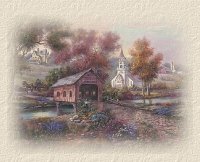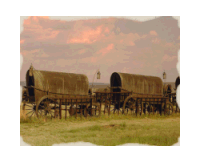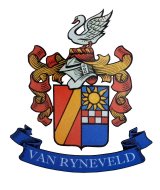
The Beaumont Project
Van Ryneveld and Weakley Families.

The Van Ryneveld lineage intersected the Weakley family with John Hayton and Rhoda Weakley. Rhoda Weakley was the daughter of Joseph Weakley who was the founder of the Weakley family in South Africa. Joseph Weakley came with the 1820 settlers and he and his son in law John Hayton were the original manufacturing gunsmiths in South Africa. The Weakley family story is fascinating in South Africa. I acknowledge with grateful thanks of two family members (one in Port Elizabeth and one in England who provided the core structures to the family. Thank you I could not have done it without your input and feedback.)
In 1789 King Carlos of Spain sent a gift of 2 rams and 4 ewes to King Willem V, Prince of Nassau. These animals were placed under the supervision of a Mr Twent, at Leyden, but he soon reported that they were not doing well, and in the same year King Willem sent this gift to the Cape. When the sheep arrived, the commanding officer of the Dutch troops, Colonel Robert James Gordon, sent them to the farm, 'Groenkloof', in the Darling district, where they flourished. Not long afterwards, the King of Spain heard of the whereabouts of his valuable present and demanded that they be returned to Holland. When Gordon received the instructions from King Willem, he dispatched the animals, but shrewdly kept the progeny. During 1795 the British occupied the Cape, and due to the strange circumstances surrounding this easy take-over, Gordon, who was suspected of treason, committed suicide. His widow decided to leave the Cape for Scotland and instructed the Sheriff, W. S. van Ryneveld, to dispose of the merino flock. At this time 3 British ships, the 'Reliance', 'Britannia' and 'Supply', were at the Cape; the 'Brittannia' was en route for England, and the other 2 were taking in provisions for the penal colony in New South Wales. Twenty-six animals were bought by Capts. Waterhouse and Kent for 4 guineas each, and Governor King of Australia, who was on his way to England, added a further 3 sheep, as a present for the New South Wales colony.
Van Ryneveld Activities in Civil Office in the early Cape.
1828 Lord Charles Somerset abolished the Landdrosts and replaced them with Civil Commissioners. Seven Civil Commissioners were appointed. A prerequisite was that they had to speak and write English. This was difficult as in about 1820 the Colony's population was estimated at 400 000 of which only 400 could speak English and only about 150 could write English. This may have been one of the reasons why the van Ryneveld family was so well represented in the group appointed.
Why the van Rynevelds were so good at English could have been due to Willem Stephanus' foresight or his partiality for the British, being a strong Orangeman who regarded the British as allies.
There were seven Civil Commissioners:-
- William Macdonald Mackay for the Cape and Simonstown. He married Maria Josina van Ryneveld, daughter of Daniel Johannes van Ryneveld
- Daniel Johannes van Ryneveld for Stellenbosch
- Willem Cornelis van Ryneveld for Beaufort and Graaff Reinet
- J.W. van der Riet for Uitenhage and George. He was probably Johannes Werndly van der Riet born 1788, nephew, through his wife Martha Cornelia van der Riet, of Willem Stephanus van Ryneveld.
- Harry Rivers for Swellendam (a very unpopular appointment)
- Charles Trappes for Worcester
- Willem Bolden Dandas was succeeded a few months later by Duncan Campbell
Combining the Resident Magistrates and Civil Commissioners
There were eleven Regional Magistrates:-
- J.P. Serrurier - Simonstown
- Abraham Faure - Stellenbosch
- Christian Lind - Swellendam
- Jacobus le Seur - Worcester
- Jan Frederick van Ryneveld - Clanwilliam
- William Harding - Beaufort West
- Egbertus Bergh - Graaff Reinet
- J Meintjies - Somerset
- Thomas Lawson - Grahamstown
- Jan Aspeling - Uitenhage
- Howard Hudson - Port Elizabeth
- Willem Wentzel - George
At the same time a Supreme Court was established with judges appointed by the Crown and independent of the Governor. While the Dutch Code of Law was retained, the procedure followed that in England. The lower courts were abolished and Resident Magistrates substituted to perform judicial functions and Civil Commissioners to perform all others. (Pedise)
Note: The first British occupation was a very temporary arrangement. Its purpose was merely to keep the Colony from falling into the hands of the French. When the House of Orange was restored to power in Holland under the treaty of Amiens, the Cape was sold to the British by the now defunct and bankrupt Dutch East India Company (DEIC) and became a British Colony. So started the second British occupation (1806). At first very little English was spoken in the Cape. The Colony was in a bad way and the tyrannical control exercised by the DEIC was replaced by a more democratic system of government and more like the British system. The provinces had their own Courts of Justice, with the Supreme Court in Cape Town. All business of the Supreme Court was conducted in English but the local courts could still use Dutch. Judges now had to be qualified men (unlike in W. Stephanus' day where judges were not government officials and had no legal qualifications). Four judges were appointed.
Combining the Resident Magistrates and Civil Commissioners
By 1834 the Colony's finances were in a bad way. Several things contributed to this including the decreased demand from St. Helena when Napoleon died, a decrease in the wine trade and some bad seasons. This amounted to a deficit of expenditure over revenue of over a quarter of a million pounds (£264 768) and Sir Benjamin d'Urban was instructed to carry out financial reforms. The Governor's salary was reduced from £10000 to £5000. The Secretary from £2000 to £1500 (this was about £3000 in Barnard's day). Mr. Crozier, Postmaster General had his reduced from £600 to £400. The combined Civil Commissioners and Resident Magistrates were paid £500 with a free residence. The changes took effect from 1 July 1834.
Other famous Van Rynevelds
The Van Ryneveld's also have some illustrious members who have become part of South African history. Amongst these is Sir Pierre Van Ryneveld who with Quinton Brand was the first person to fly from England to South Africa non stop. He was shot down in the war and woke up on a slab in a French Mortuary.
Van Ryneveld Family Crest
Wapen: Charles Bell beeld in sy manuscrip (afb 171) die wapen af: Gedeel: I in rooi 'n linkerskuins balk van goud; II in blou 'n dwarsbalk geskakeer in twee rye van rooi en silwer, in die skildhoof vergesel van 'n stralende goue son. Helmteken: 'n swaan van natuurlikke kleur.
I have attempted to translate the above description into heraldic terms:-
Gules party per pale divided a bend sinister or., azure second part per fess divided by a fess counter-compony gules and argent. In the second quarter a sun radiant charged with a spot or. Azure fourth quarter unadorned. Esquire helm argent with gules interior. Mantling ribbons or. and gules. Torse or. and gules.
Crest:- a swan statant wings displayed argent.
Azure heraldic ribbon with argent Van Ryneveld name.

There are records of some 4000 Van Ryneveld family members who are no longer alive on this website. There are additional records of about 3500 living members of this family in the databases as well. The living records are available on request. (See the request link below)
